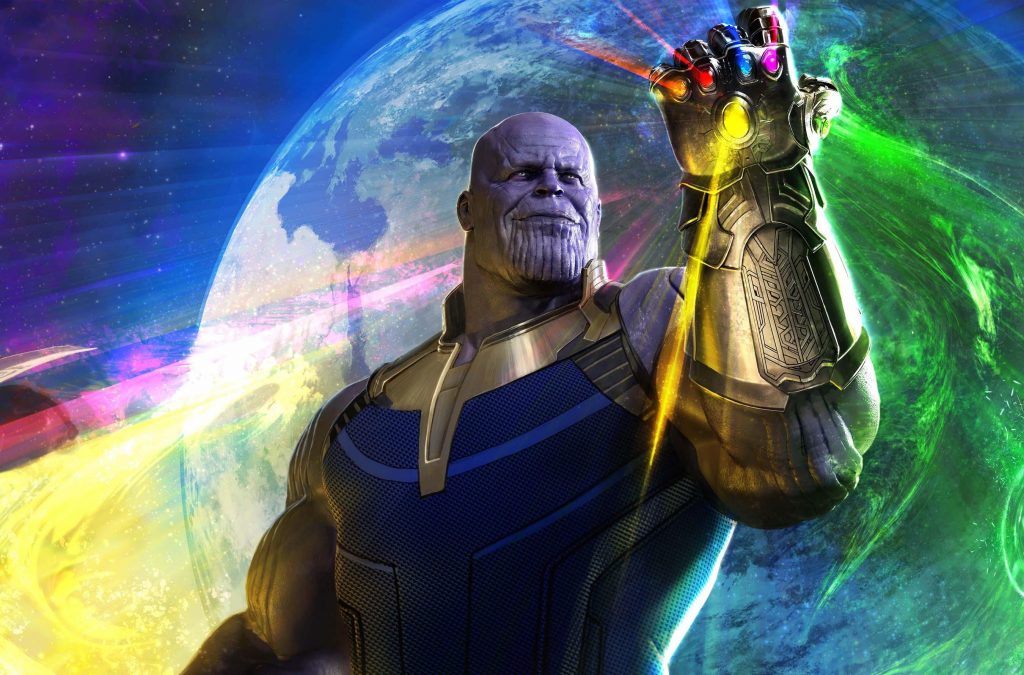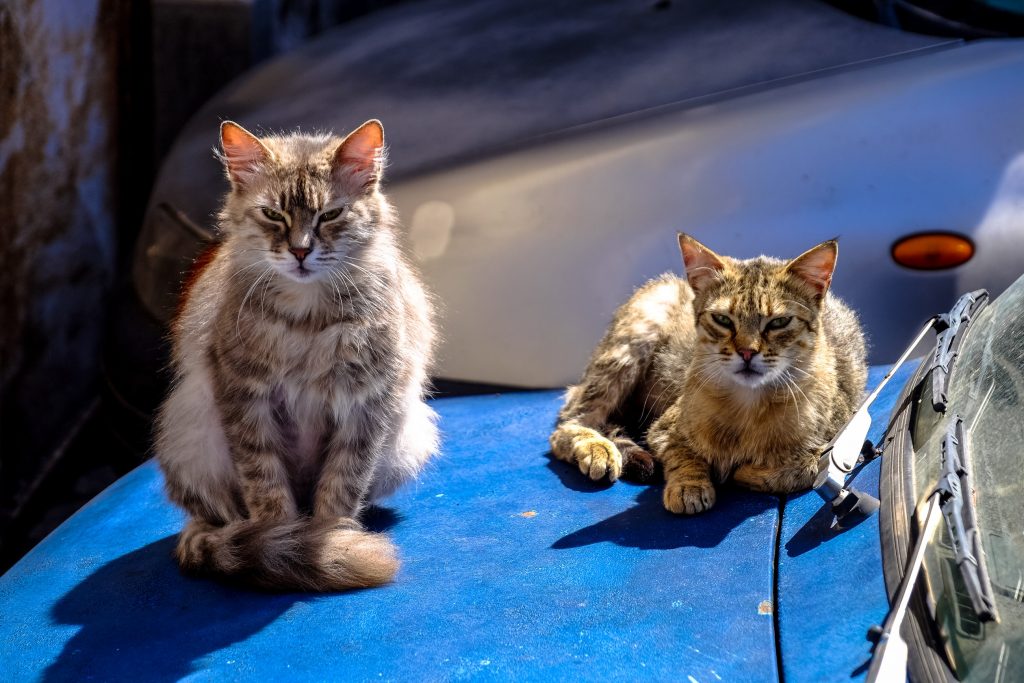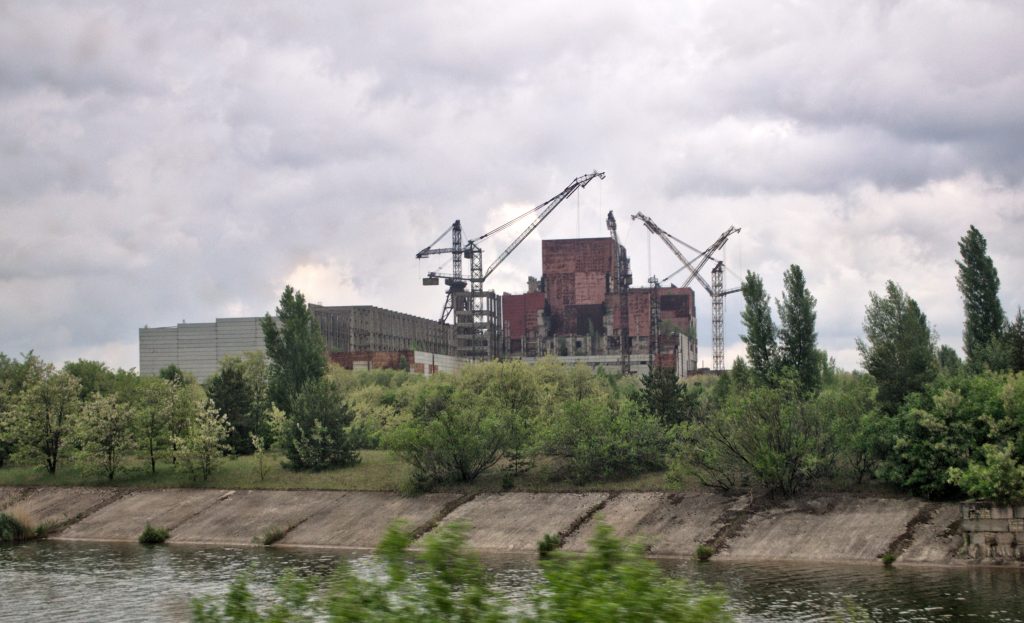A few years ago, after reading The World Without Us by Alan Weisman, I wrote a post for my sustainable lifestyle blog. But as it was inspired by a book (and a movie universe based on a comic book), it fits here as well. So here it is.

I’m not particularly a fan of people and their actions that destroy each other and the world. That’s one of the reasons why I especially like to escape our world by reading science fiction and watching superhero movies. Additionally, I enjoy reading and listening to scientific and philosophical books, which show what people are capable of when all that brain mass is put to good use.
In this a bit different post, let’s take a moment to combine science fiction and science-based philosophy. What do the movie Avengers: Infinity War and Alan Weisman’s speculative book about a future world without humans, The World Without Us, have in common? Both prompt us to think – how would the disappearance of part or all of humanity affect the rest of the world? True, the complete disappearance of humanity is not particularly positive for people. So let’s start with the disappearance of half the population.
Good always wins?
Superhero films. These are the inflated, heavily masculine-stereotype-laden, ultimately American cinema hits that so many ‘serious’ actors, directors, and book readers scrunch their noses at. But there’s nothing to be done about it; it’s just incredibly fun to watch the brightly coloured, engaging, and usually quite humorous adventures that let you forget about everyday life for a couple of hours. Often in these movies, both the superheroes and their antagonists grapple with issues related to community and the environment. And good doesn’t always win (at least not in the first half).
For instance, the villain of the last big Avengers movie, Thanos, had a very noble goal – to save the inhabitants of the universe from the scarcity of resources caused by overpopulation and its related problems. The solution, which involved turning half of the universe’s population to dust with a snap of his fingers, could perhaps be described as somewhat extreme.

However, Thanos came, and obtained all the Infinity Stones, Thor, in his need to show off his new axe, did not think to strike it directly onto Thanos’ head rather than his chest or even to chop off his hand. Thanos snaps his fingers, and half of all life on our planet disappears. Including animals. Thanos goes to watch the sunrise on a farm.
In addition to the great confusion and panic from the dusting of people, a whole bunch of car accidents follow due to suddenly driverless cars, planes falling from the sky, and the like. Maybe here and there an explosion resulting from a safety valve not being opened in time. A wave of suicides by survivors guilt-ridden people left without families and friends would follow. Looting and other lawless behaviour, conflicts, and even wars would not fail to ensue. In short, it’s a bit morbid and depressing, but let’s face it, we’re probably not going to stop at half of humanity.
Thanos’s idealistic idea was that if half the people consume only half of the resources, then it means also the disappearance of half of those people who mine, grow, and process these resources. This likely affects the animal kingdom’s predators too, whose food supply would be halved. True, the competition diminishes as well, but it probably depends on the region. The number of animals put into extinction danger due to human activity would decrease even further.
It seems that amid all this horror and despair, people likely don’t have much time to deal with things like cleaning the oceans. For quite a few years, the priority would presumably be moving the cars stranded on roads, the aeroplanes that have fallen from the sky, the boats washed ashore, and similar things.
As nature and even more so human beings cannot stand a vacuum, the greedier ones will manage to justify creating more pollution, and quite swiftly, we are likely to multiply back into the same mess. According to a book I’ve been reading, the world’s population increases by one million every four days. Hence, I would dare to say that Thanos’s plan is not very sensible in the long term. Not for humans, or animals.

The World Without Us
The complete disappearance of the greatest threat to the entire animal kingdom, humans, could, however, have quite a positive effect on flora and fauna: the emission of exhaust gases into the air would end (we had a good example of that during the COVID lockdowns), the diversity of plants would slowly recover, and as a result, the number of animals and the richness of species in agricultural areas, as well as in cities, would increase.
For example, war-torn areas around the world show, that nature reclaims its territory quite swiftly once human settlements are abandoned. No matter how imposing our modern structures may seem, without constant maintenance by humans, everything falls into decay quicker than one might expect, especially in areas with fluctuating temperatures. Pipes freeze and burst, roofs cave in, water infiltrates buildings, concrete crumbles, and metal rusts. Plants weave their way into cracks in the asphalt, water worsens the damage, and everything becomes covered with layers of fallen leaves and dead vegetation, which over time turns into soil, allowing new species to take over the area. In general, it would be a grand celebration if not for all the mess that people have managed to leave behind in the world. We have created so much trash and potential hazards on this planet that we have no right to simply disappear without cleaning up our mess first.

There are several problems. The biggest concern with farmlands, which account for about one-third of the Earth’s total land surface, is the heavy metals that have ended up there as by-products of pesticides and fertilizers. The soil is contaminated with zinc, which will remain there for at least 3,700 years, and cadmium, which stays for 7,500 years. Yet, these are nothing compared to lead, which takes at least 35,000 years to disappear. Lead, which affects the nervous system, development, hearing, and brain activity, and causes kidney diseases and cancer in both humans and animals, also enters nature from runoff.
As there are no longer people actively engaged in soil decontamination and cleaning up plants that accumulate metals, those plants will die and release the metals back into the soil, perpetuating an endless cycle. If these metals are suitable for the growth of certain highly specific plants, the majority still cannot tolerate such metal-rich soil. Some plants will die out and biological diversity will suffer. This, in turn, affects the entire food chain.
Pollution is not limited to the area that has been processed; numerous harmful substances rise into the air and fall back down in other regions. For example, elevated levels of PCBs (polychlorinated biphenyls) commonly used in warmer areas have been found in the breast milk of Inuit women as well as in the fat layers of fish and seals. These and other chemicals are also to blame for the growing number of hermaphroditic polar bears.
Rainwater and groundwater carry these same metals to the currently most discussed pollution collection area – the oceans, which are so full of plastic and other toxins that the constantly degrading garbage becomes dangerous to ever smaller creatures, which in turn affects the population of the animals that feed on them. Even if the oceans, filled with waste, recover, and the chemicals steaming off the garbage dumps and seeping into the ground are eventually cleaned up by nature, some threats are simply too large in scale.

In the year 2000, there were as many as 77,000 telecommunication and radio towers over 60 meters tall in the USA alone, which, according to aviation safety regulations, are required to be illuminated. However, birds are drawn to light in poor weather conditions — typically the light they follow is that of the moon — and as a result, an estimated 200 million birds per year die due to collisions with these towers. And that was only the beginning of the mobile phone era. On top of that, another 100 million birds die annually by crashing into glass-faced buildings. The hope is that as towers stop flashing and the glass from these buildings breaks, these hazards would disappear over time.
However, a threat to the birds created by us remains to the birds in the form of our domesticated cats. In Wisconsin for example, with a population of nearly six million people, cats kill at least 8 and up to 200 million birds a year. Cats are and will remain natural predators and can manage in a world without humans. Dogs on the other hand will sadly probably have to submit to larger predators that come to cities after humans.

However, one invisible concern we have created is the ozone hole, which scientists believe will be patched by 2060, if we stop using harmful substances and find a way to safely destroy the substances in use. However, if people do not engage in this safe destruction work, over the years, millions of refrigerators, air conditioners, cars with cooling devices, etc. will break down in the world, emitting chlorofluorocarbons, which will find their way into the stratosphere and continue their destructing work. Maybe the world will be lucky and it won’t all happen at once, and nature will be able to patch itself together.
However, the world’s more than 400 nuclear power plants, which would overheat without people and fill the entire earth with Chornobyl-like disasters, can quickly do the most damage. The same happens with the ‘temporary’ storage of these residual materials. It will take longer for the world’s 30,000 nuclear bombs to decay, long enough that they won’t do much damage after that time. However, we can also expect leaking oil and natural gas mines, which probably also cause long-lasting fires.
Yes, it’s frustrating, but unfortunately, we’ve screwed up enough by now that just disappearing is not an option. But continuing like this is not an option either.

At our current resource consumption, we would need 1.7 earths to continue like this or just about half as many consumers (read more on the topic: footprintnetwork.org). In that sense, Tahnos had a point. However, a slightly less extreme approach would be to simply reproduce less in the future.
More than ten years ago, when Weisman’s book was written, there were 6.5 billion people in the world. If those people had all agreed that from that moment on, instead of the then average of 2.6 children, there would be 1 child per woman, there would be one billion fewer of us by the middle of the century. By the year 2075, however, Thanos’ plan would have been achieved and there would be about 3.43 billion fewer people.
But Hans Rosling tells why it doesn’t work.
And since it doesn’t work out, we’re probably still moving towards the destruction of the world one way or another. Oh well…
P.S! In the 1960s, British atmospheric scientist, chemist and marine biologist James Lovelock came up with his Gaia hypothesis, according to which the Earth behaves like a superorganism. Its soil, atmosphere and oceans create a circular system regulated by flora and fauna. However, man seems to be the virus in all of this. Lovelock suggests that people create a “user manual” (on durable paper) of the most important human knowledge for those who will survive the next millennium of a heated world over the poles until the oceans have recycled enough carbon for the world to recover.
And what’s more – if you enjoy the ‘great’ computer-generated visuals from ten years ago, a series has been made based on the book, all episodes of which can even be found on YouTube.

